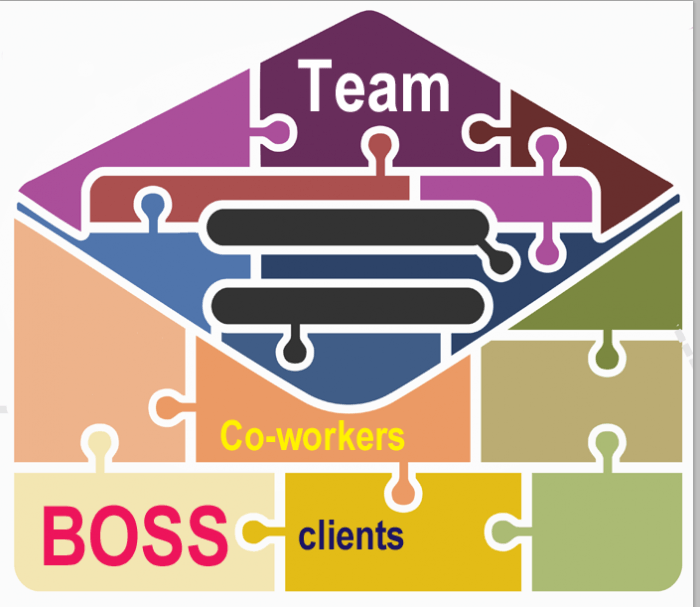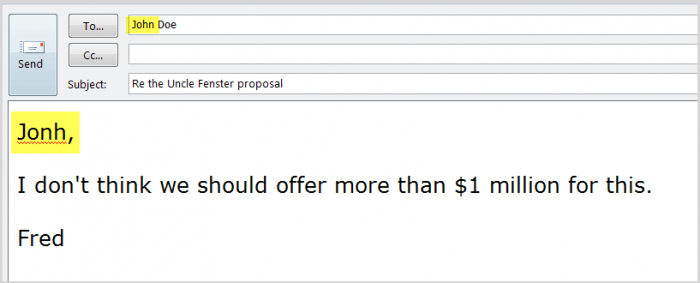 Email is so common, and such a pedestrian workhorse, that it’s easy to take it for granted. But in a business setting, it’s a fine opportunity for you to win (or lose) people’s esteem, and it can have a very positive (or crushingly negative) effect on your employment. Let’s take a look at a baker’s dozen of ways you can make sure your email habits and etiquette are up to snuff. Note: we are not talking about marketing emails, but person-to-person business emails.
Email is so common, and such a pedestrian workhorse, that it’s easy to take it for granted. But in a business setting, it’s a fine opportunity for you to win (or lose) people’s esteem, and it can have a very positive (or crushingly negative) effect on your employment. Let’s take a look at a baker’s dozen of ways you can make sure your email habits and etiquette are up to snuff. Note: we are not talking about marketing emails, but person-to-person business emails.
Good email habits can help your career
- Pay attention to spelling, grammar and punctuation. Sending a professional email starts with ensuring that it doesn’t contain these kinds of errors. The best way to do that is to make sure your language skills are polished and correct (or find yourself a trusty editor). Virtually every email program has a spell check feature, so even if you think you’ve got every word nailed, run the email body through spellcheck. In most cases it will also pick up obvious punctuation mistakes as well. Using poor grammar, slang, or dangling modifiers, or letting sentences run on or wander around without making sense, gets you noticed (in a bad way). Look in your email tools menu, and set spellcheck to run before you send an email. (You’ll be amused and amazed by the trouble it saves.) Do be especially careful not to mangle someone’s name.
- Get to the point. People are busy; they don’t have time to read long emails. Your customer or colleague wants to know what an email is all about as quickly as possible. Don’t add fluff or information that isn’t needed.
- Use blind copy (BCC) and courtesy copy (CC) correctly. BCC should be done only as a convenience when sending out a mass email distribution list so customers or colleagues won’t have to see a large list of names (and people who don’t want their email shared will be protected). Use CC when sending copies to anyone who is directly involved with a specific idea or function.
- Should you copy your boss when you’re sending an email about a company issue or project? Maybe. If you’re in doubt, ask your boss. If it’s something important, they may want to be in the loop. If it’s mundane, they may find it an annoyance. Ask. This helps you position yourself as someone who is simultaneously respectful of others’ time and also mindful of keeping them informed.
- Remember what your mother said. Say “please” and “thank you.”
- Sign off appropriately. “Your humble servant” is out of fashion and “luv alwaze” was never in. Try, “Regards” for a professional (if distanced) tone (and its variations – “Warm”, “Best”, “Kindest”) or “Best Wishes,” or the increasingly common “Cheers.”
- Keep the message thread in place during a reply. This reminds the original sender of what the subject was, and directly shows how you responded to it.
- Delete spam, chain letters and junk mails. Do what you wish on your own personal time at your home computer, but delete these types of advertising/marketing/scamming emails every time they show up in your business email.
- Is email really the right communication method? Just because it’s the easiest doesn’t always mean it’s the best. Any major problem or issue is best resolved either face to face, or on the phone. If the person sits next to you or down the hall, get out of your chair and go talk to them. If you need to have the discussion captured in writing, send a follow-up note.
- Skip the abbreviations and the smiley faces. Email etiquette demands that abbreviations be spelled out and that smiley faces, or other emoticons, should not be used. Especially if your email is going to be customer-facing.
- Always ask the originator before sending a copy. Unless the original email specifically states that you are allowed to copy and distribute it, you must ask the originator before doing so. If you don’t, you may be infringing on copyright laws, and that could lead to a lawsuit.
- Oh, and by the way, don’t swear in a business email. Ever. You never know who your email could be forwarded to; if the CEO saw your email, would he or she be proud of the way you represented the company?
Speaking of lawsuits arising from email:
With every email sent, you must protect yourself, and your company, from any possible liability. Depending on your business, “liability” could be related to what you say about people; information you disclose about your company, suppliers, or industry; privacy-related personally identifiable information (PII); or intellectual property. Some industries,e.g. health, have specific, strict laws about what can be shared via email. Know what those are, and be compliant.
And a caution about personal email:
When you send your email from a company address (or use your company internet connection to send email from a private account), your email goes through your company’s servers. Your communications may be monitored, by either an on-site IT person or an off-site company. Which means the email you send is not going to be completely private; someone else has the capability to read what you write. This means it’s a very, very, very good idea to keep your personal problems and emotions out of emails sent through your company infrastructure at all times.
A final word about email etiquette
Perhaps the most basic of all email etiquette is common sense. Your business email should always have a distinct purpose. If it doesn’t have one, don’t send it. If it does, think about what the email is supposed to do and how it may be perceived by its receiver. Is it clear? Is it as short as you can make it? Did you leave anything important unsaid? How would you feel if someone sent this email to you? How would you feel if your boss (or your CEO) saw this email? If all systems are go, send it, knowing that you’re making a good communication … the kind that can get you noticed, and promoted.
Ready to go beyond one-to-one emails? Here’s a primer on email marketing basics:


